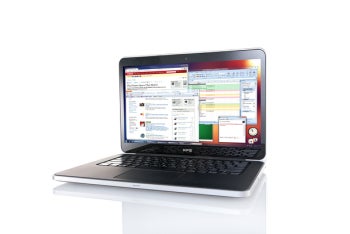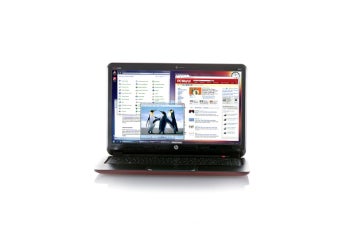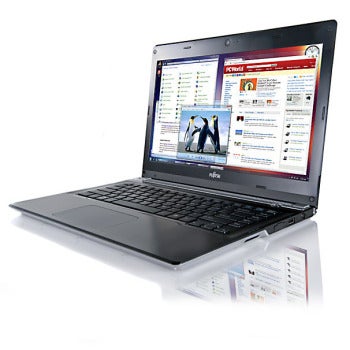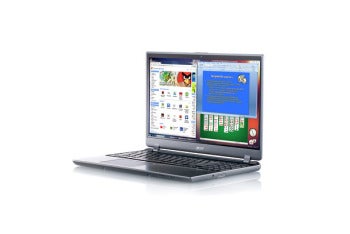It’s back-to-school time, and retailers are inundating everyone with back-to-school specials, ads, email promos, and even direct-mail offers, all promising the best possible computer deal for your student. The problem is that many of these deals focus on some generic student, failing to address the needs or wants of individual students. Sure, the bargains often look attractive, but before you whip out your credit card, you should spend a little time with your student to figure out what they need. College students, for example, don't have an easy time buying a computer for school. Budgets can be tight. Space is at a premium—particularly today, when colleges are cramming three bodies into rooms designed for just a pair of students. And computer needs may change due to class requirements. That’s not to say that high school students don’t have their own needs. Nowadays, high school juniors and seniors face more-demanding curricula, with an increased homework load plus a growing need for collaboration and teamwork. They may have more space than college students, but not necessarily more budget. Since today’s students are more mobile and more connected than ever, laptops are typically a better choice for students than desktop PCs. Students who require a larger display can always connect to one at their home desk. My younger daughter, Emily, is heading off to college this year, and we just finished researching and buying a laptop. In addition to talking about technology and products, I’ll share some of our experiences and thought processes.
Before Buying: Research
 My college-bound daughter, Emily, liked the usability and design of the Dell XPS 14.First of all, web is an excellent tool for researching laptops. it gives you an edge, helping you zero in on the models you should consider. You can sort the reviews by price, size, brand, and other features. Don’t forget to check with the college or university your child will be attending. Schools often have listings of deals from different manufacturers, including discounts that may not be readily visible on the manufacturers' websites. Also check any specific requirements the university has for hardware, software, or accessories. While most colleges may be brand agnostic, a few support Apple or Windows exclusively. Other colleges restrict certain types of hardware, forbidding items such as routers or network-attached storage. You’ll want to know about such conditions before you buy anything.
My college-bound daughter, Emily, liked the usability and design of the Dell XPS 14.First of all, web is an excellent tool for researching laptops. it gives you an edge, helping you zero in on the models you should consider. You can sort the reviews by price, size, brand, and other features. Don’t forget to check with the college or university your child will be attending. Schools often have listings of deals from different manufacturers, including discounts that may not be readily visible on the manufacturers' websites. Also check any specific requirements the university has for hardware, software, or accessories. While most colleges may be brand agnostic, a few support Apple or Windows exclusively. Other colleges restrict certain types of hardware, forbidding items such as routers or network-attached storage. You’ll want to know about such conditions before you buy anything.Work Versus Play: A Reality Check
Sometimes it seems like the ideal laptop for a student weighs under 4 pounds, sports a 24-inch display, carries 5TB of storage, and has a 175W graphics processor. That’s an impossible mix, of course, so your first task is to talk with your student and do a reality check. Emily is a good example. She’s a pretty serious PC gamer; she likes playing MMOs and PC-based role-playing games that often demand serious graphics horsepower. You need to impress on your student that a laptop for school should be optimized for the work, not the play. When we bought a school laptop for my older daughter, Elizabeth, we didn’t quite grasp this concept. She ended up with a 15.6-inch laptop that had a decent mobile GPU and a very nice screen—and weighed nearly 7 pounds. She came to dread lugging it around, even when she needed it for class. Next time around, she’ll get something lighter, as she has come to realize that she doesn’t really use her laptop for gaming; her most demanding application is photo editing. Classes change, and so do hobbies.
 The HP Envy 4 turned out to be a no-go because the touchpad buttons required a lot of force to press.
The HP Envy 4 turned out to be a no-go because the touchpad buttons required a lot of force to press.
I told Emily that if gaming was truly important to her, she should consider making room for a desktop system of some kind. For a school computer, mobility was more important than the ability to run Mass Effect 3 at high detail levels, I said. On the other hand, she wasn’t willing to sacrifice usabilityfor sheer portability. (I’ll get to what that means shortly.)
She’s also a pretty good touch typist, so both keyboard and touchpad feel are important to her. Performance is a high priority, too—but when Emily talks about performance, she really means “responsiveness.” So although raw CPU or graphics horsepower may not be critical, having adequate memory to allow a lot of simultaneously open windows and browser tabs is pretty important. Ask your student several questions: What types of classes are they taking? Will the emphasis be on math or writing, or will it be a blend of both? Online collaboration is more common now than in past years, so reliable networking capabilities and a good webcam are must-haves, too.
Let’s run down a list of key considerations.
- Budget: Before you begin shopping, set your budget. That will narrow the choices substantially. Try not to set the budget too low. Newspaper ads are often full of $499 laptops, but those models tend to be bulky, with less-than-robust plastic shells. The sweet spot for performance and durability seems to be between $800 and $1200 these days. Spending more than that will get you nice luxuries, such as a large solid-state drive or a beefier CPU, but typically those aren't necessities.
- Mobility: This term means different things to different students. Some people are willing to lug around 7 pounds of laptop all day long, but most aren’t. Remember to factor in the weight of the charger.
- Battery life: A high-performance laptop will do little good if the battery dies after a couple of hours. You can’t always find wall power on the go.
- Usability: A good keyboard and a usable touchpad are both important, but the feel is a personal choice. Some folks are willing to give up a little tactile feedback in the keyboard if it saves them a pound of weight.
- Display: The most common LCD-panel resolution today is 1366 by 768. But if you can find a laptop with a good 1600-by-900-pixel screen or even a 1080p display, that machine becomes even more usable, particularly for Windows 7 and the upcoming Windows 8.
- Mac versus PC: This is another personal choice. My older daughter might have been perfectly happy with Mac OS X, but Emily was adamant about getting a Windows-based system.
- Storage: Since laptops are often a student’s only PC, adequate storage is essential. A 128GB SSD might be ideal for a business road warrior connected to corporate servers, but students will want their music, their photos, and even their games on the one system. Typically that means picking a laptop with a large hard drive over one with a smaller SSD.
- Secondary storage: In addition to primary storage, your student will need backup storage. Although backing up to cloud services is an interesting option, having a portable, bus-powered hard drive is crucial.
- Connectivity: If the laptop lacks an ethernet jack, as some ultraportable systems do these days, you’ll want a USB-to-ethernet adapter. While most universities now have Wi-Fi in most places, not all of them do. For example, Emily’s dorm rooms require a wired ethernet connection, even though Wi-Fi is available on the main campus.
- Support: Springing for an extra warranty is worthwhile. First-year students in particular tend to bang up their laptops, spill coffee on them, lose them. Extra support services, such as an extended warranty that also covers accidental damage, can be indispensable. Many companies now also offer location tracking, such as Intel Anti-Theft technology, Lojack for Laptops, or Apple’s Find My Mac. A tracking feature could be a lifesaver if your student leaves the laptop in a coffee shop or if someone steals it.
Don't Sweat the Jargon
You'll find laptop ads full of terms like "turbo-boost," "3rd-generation Core processor," "400-nit brightness," and other jargon. Most PCWorld readers already understand a fair amount of this stuff, but you don't need to obsess over the raw spec details. In a mobile PC, usability, battery life, and ease of transport are much more important.
Listening to Needs: It’s Not Obvious
Even within the framework of the basic considerations I listed on the previous page, you'll find a huge variety of products, so take some time with your student to check out different models that may fit your child's needs. Look at a bunch of products, and quiz your kid. Remember, though, that the answers you get back won’t always be particularly revealing. As I noted, my daughter Emily is a touch typist, so the keyboard feel is important to her. When I sat her down with a bunch of different laptops, she tried typing on them. Some she liked better than others, but the reasons weren’t always obvious. I had to ask some very specific questions, trying to get her to explain what it was about a particular keyboard that she did or didn’t like.
 The Fujitsu Lifebook EH572 was a no-go because of its perfectly flat keys.It took a number of questions, but eventually I discovered that two aspects of the keyboard were important to her. First, the individual keys needed to respond significantly; she didn’t like keyboards where the keys depressed only slightly. Second, the keys had to be sculpted a bit, to have a little depth to them. Many modern keyboards have perfectly flat, Chiclet-style keys. So laptops like the Fujitsu Lifebook EH572 were no-gos.
The Fujitsu Lifebook EH572 was a no-go because of its perfectly flat keys.It took a number of questions, but eventually I discovered that two aspects of the keyboard were important to her. First, the individual keys needed to respond significantly; she didn’t like keyboards where the keys depressed only slightly. Second, the keys had to be sculpted a bit, to have a little depth to them. Many modern keyboards have perfectly flat, Chiclet-style keys. So laptops like the Fujitsu Lifebook EH572 were no-gos.
Emily told me that the keyboard layout wasn't critical to her, but that she had some definite expectations of the touchpad. Palm detection was very important: She would get annoyed when the cursor would fly around the screen for no apparent reason. The other issue with the touchpad was click pressing. Requiring excessive effort to click was a big negative, even given that most touchpads today support double-taps. She rejected the HP Envy 4 because the touchpad buttons required a lot of force to press.
She had no awareness of gesture recognition; I had to teach her about multitouch gestures, but after a few minutes, she was scrolling and changing page sizes like a pro.
Screen resolution turned out to be less of an issue than screen size. Unsurprisingly, a physically larger screen was better, provided that the weight increase wasn’t too much. On the other hand, too few pixels in a large screen was problematic. The Acer TimelineUltra M5, with its 15-inch screen at a 1366-by-762-pixel resolution, lost out because of the visible pixels.
The bottom line here is that it’s worth the effort and time to examine various models at your local electronics store or PC-dealer kiosk. There’s nothing quite like hands-on experience.
Do Brands Matter?
Brands do make a difference, but they all have their pros and cons. Large manufacturers, such as Dell, Lenovo, and HP, typically have deeper support organizations; if you buy one of their machines, however, it’s also easy to get lost in the shuffle. On top of that, they tend to have a vast array of models that often differ dramatically in usability and in overall features.
 The Acer TimelineUltra M5 didn't have enough pixels on its large screen for my daughter's taste.
The Acer TimelineUltra M5 didn't have enough pixels on its large screen for my daughter's taste.
Second-tier companies such as Acer and Asus usually offer innovative models that take some risks, but their support can be iffy. Quality can vary dramatically from one model to the next. And boutique companies like Origin PC tend to have their machines manufactured at the same Asian factories, so their systems tend to look very similar to their competitors' laptops.
In the end, what matters most is the individual laptop, which is why getting hands-on experience is critical. When Emily was looking at laptops, she dismissed the Dell Inspiron 14z after only a few minutes, deeming it "uninspired and clunky." Yet she liked the Dell XPS 14, a laptop similar in shape and weight to the Inspiron 14z, quite a lot. The differences weren’t in features such as the CPU or screen, but in usability.
Which Specific Model?
The days of built-to-order systems seem to be at an end. Instead, manufacturers usually ship a set of discrete submodels, varying just a few features, including the CPU, the graphics chip, the storage, and the memory.
Let’s say you’ve chosen a laptop brand and model. You’re still not done making choices. Take the aforementioned Dell XPS 14 as an example. The lowest-cost model is $1099, but it ships with Intel HD 4000 integrated graphics. All the pricier versions include Nvidia GT 630M discrete graphics, which improves PC gaming a bit. As you go up the price curve, you add more memory, a faster processor, and even an SSD. By the time you hit the top price, you’re at nearly $2000, which doesn’t even factor in the extended warranty, the taxes, or the shipping. Two grand for a college student’s laptop seems a little excessive for most families.
Of course, since it is back-to-school time, assorted manufacturers, your local big-box store, or online retailers such as Amazon.com may offer specials. Dell, for instance, has a deal that includes an Xbox 360 with a laptop purchase. Closer examination of the offer reveals that you can forgo the Xbox 360 and substitute a $200 gift card, which you can then use to buy external storage, a wireless mouse, or other useful accessories. HP, meanwhile, seems to be offering a straightforward, tiered discount for students, but only on specific models. As you examine specials, keep in mind that comparing models is often difficult, as PC manufacturers sometimes offer targeted models for certain retailers, such as Best Buy. And some deals might be hidden: While Dell seems to be pushing Inspirons for students, it's also offering discounts on some of its other brands, such as XPS.
Don’t Forget Software and Accessories
Students can make out like bandits on the software side, as Microsoft, Adobe, and other companies frequently offer steep student discounts. Microsoft Office University 2010, which includes full versions of Word, Excel, PowerPoint, OneNote, Outlook, and Publisher, costs $99. Adobe Photoshop CS6 Extended is $249 for students.
 As for peripherals, I’ve already mentioned external storage for backups; you might want to take the time to set up a formal backup plan with your student. Consider your child's comfort, too: Although they’ll use the touchpad for on-the-go computing, a Bluetooth mouse (and maybe even a full-size keyboard) will be useful on their desk. They might need other gear, as well, such as an ethernet cable or a printer. If your student is sharing a dorm room, they may want to discuss sharing a printer with their roommates. A single, shared wireless printer takes up less space than three direct-connected printers in a cramped room.
As for peripherals, I’ve already mentioned external storage for backups; you might want to take the time to set up a formal backup plan with your student. Consider your child's comfort, too: Although they’ll use the touchpad for on-the-go computing, a Bluetooth mouse (and maybe even a full-size keyboard) will be useful on their desk. They might need other gear, as well, such as an ethernet cable or a printer. If your student is sharing a dorm room, they may want to discuss sharing a printer with their roommates. A single, shared wireless printer takes up less space than three direct-connected printers in a cramped room.Final Thoughts
If your student picks the right laptop, they’ll be satisfied with it for several years. You'll be thankful, and they’ll be more productive as students in their new, unfamiliar environment. And who knows: You may find your copy of Skype pinging you one day, and discover that your son or daughter is just calling to say “hi” between classes. Then you’ll really be sure that their laptop choice was the correct one.

No comments:
Post a Comment